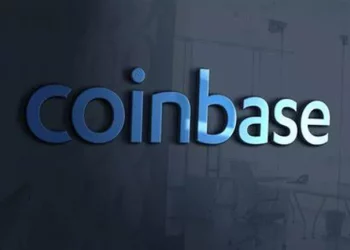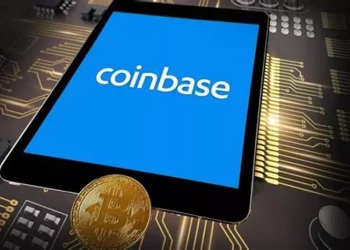Cryptocurrency staking has gained immense popularity as an alternative to traditional methods of earning passive income, and Binance is one of the leading exchanges offering this feature. As a platform that provides a wide range of services, Binance allows users to stake a variety of cryptocurrencies, earning rewards through a relatively straightforward process. But what exactly is staking on Binance, and how can users benefit from it?
This article provides a deep dive into staking on Binance, covering the basics of staking, how it works, the different types of staking offered, the benefits and risks associated with staking, and how to stake on Binance. Whether you’re new to cryptocurrency or an experienced trader looking to diversify your portfolio with passive income opportunities, this guide will give you a clear understanding of staking on Binance.
Understanding Cryptocurrency Staking
Before delving into how staking works on Binance, it’s important to understand what staking is in the context of cryptocurrency. Staking is the process of participating in the validation of transactions on a blockchain network that uses a Proof-of-Stake (PoS) consensus mechanism. In simple terms, staking involves holding a certain amount of a cryptocurrency in a digital wallet and locking it up to support the operations of the blockchain, such as transaction validation, security, and network governance.
In exchange for staking their cryptocurrency, users typically receive rewards in the form of additional tokens. This process is similar to earning interest from a traditional savings account, except that the rewards in staking are usually more lucrative, depending on the coin and platform. Staking rewards can vary based on the staking amount, duration, and specific cryptocurrency being staked.
Staking provides an opportunity for cryptocurrency holders to passively earn rewards without needing to actively trade. By supporting the network’s operations, stakers help ensure the integrity and security of the blockchain while benefiting from a passive income stream.
Why Stake on Binance?
Binance is one of the largest and most reputable cryptocurrency exchanges globally. It offers a variety of features, and staking is one of the most popular options for users looking to earn passive income with their digital assets. There are several reasons why Binance stands out as a preferred platform for staking:
Variety of Cryptocurrencies: Binance supports a broad range of cryptocurrencies that can be staked, including popular coins like Bitcoin (BTC), Ethereum (ETH), Binance Coin (BNB), Polkadot (DOT), Cardano (ADA), and many others. This variety allows users to diversify their staking portfolios and maximize potential rewards.
High Staking Rewards: Binance typically offers competitive staking rewards compared to other platforms, with annual percentage yields (APYs) that can range from 1% to over 100%, depending on the cryptocurrency being staked and market conditions.
Ease of Use: Binance simplifies the staking process with an intuitive interface. Users can stake their coins with just a few clicks, and there are no complex technical requirements or coding knowledge needed.
Liquidity and Flexibility: Binance offers different staking options, including Flexible Staking and Locked Staking. Flexible staking allows users to withdraw their staked tokens at any time, providing more flexibility in managing their investments. Locked staking, on the other hand, typically offers higher rewards but requires a commitment for a fixed period.
Security and Trust: Binance has a strong reputation for security, with robust features such as two-factor authentication (2FA), cold wallets, and advanced encryption to protect users’ funds. The platform also complies with global regulations, adding an extra layer of trust for those looking to stake their assets.
Additional Features: Binance also provides a staking pool, allowing users to stake smaller amounts of a cryptocurrency and still receive rewards, even if they do not meet the minimum staking threshold on their own.
How Staking Works on Binance
Staking on Binance is designed to be straightforward and accessible for both beginners and experienced cryptocurrency users. The platform offers two primary types of staking: Flexible Staking and Locked Staking. Both methods involve holding and staking a specific amount of cryptocurrency on the platform to earn rewards.
Flexible Staking
Flexible staking allows users to stake their coins and earn rewards with the added benefit of liquidity. This means that users can withdraw their staked coins at any time without facing any penalties. The rewards for flexible staking tend to be lower compared to locked staking, but the flexibility it offers can be appealing for users who want to maintain more control over their funds.
How it works: Once you stake your coins through flexible staking, you will start earning rewards based on the amount staked and the duration. The rewards are usually distributed daily or weekly, and the rate can vary depending on the asset.
Withdrawal: You can withdraw your staked funds at any time without penalties. However, it’s important to note that the rewards stop accumulating once the withdrawal request is made, and the withdrawal process may take a few hours or days, depending on the cryptocurrency.
Locked Staking
Locked staking, as the name suggests, requires users to lock their cryptocurrency for a predetermined period, typically ranging from 7 to 90 days. In exchange for this commitment, users can earn higher rewards compared to flexible staking. The rewards for locked staking are usually paid out at the end of the staking period.
How it works: After you lock your coins, you cannot withdraw or access them until the end of the lockup period. The longer the lockup period, the higher the reward rate typically is. For example, staking for 90 days might offer higher rewards than staking for just 30 days.
Withdrawal: Unlike flexible staking, locked staking does not allow you to withdraw your staked funds before the lockup period ends. However, the reward rates for locked staking are generally more attractive, making it a suitable option for users who don’t need immediate access to their assets.
Types of Cryptocurrencies You Can Stake on Binance
Binance offers staking for a wide variety of cryptocurrencies, allowing users to stake their holdings in many different assets. Some of the most popular cryptocurrencies that can be staked on Binance include:
Binance Coin (BNB): As the native cryptocurrency of the Binance exchange, BNB offers a staking option with competitive rewards. Binance Coin is often used to pay for transaction fees on Binance, and staking BNB allows users to benefit from its growth.
Ethereum (ETH): With Ethereum 2.0 transitioning to a Proof-of-Stake consensus mechanism, staking ETH on Binance allows users to participate in securing the Ethereum network and earning rewards.
Polkadot (DOT): Polkadot is a multi-chain network that allows for interoperability between different blockchains. DOT holders can stake their tokens on Binance to earn rewards while supporting the Polkadot ecosystem.
Cardano (ADA): Cardano is a popular blockchain platform that uses a Proof-of-Stake system. Users can stake ADA on Binance and contribute to the network’s operations while earning staking rewards.
Solana (SOL): Solana is known for its high-speed transactions and low fees. Staking SOL on Binance allows users to earn rewards while supporting the network’s scalability and performance.
Avalanche (AVAX): Avalanche is another blockchain project focused on scalability and decentralized finance (DeFi). Staking AVAX on Binance gives users the opportunity to support the network and earn rewards.
In addition to these well-known coins, Binance supports staking for many other altcoins and tokens, making it a versatile platform for crypto investors.
How to Stake on Binance: A Step-by-Step Guide
Staking on Binance is a simple process, especially for those who are already familiar with the platform. Here’s a step-by-step guide on how to stake your cryptocurrency on Binance:
Step 1: Create a Binance Account
If you don’t already have a Binance account, the first step is to create one. Visit the Binance website and sign up by providing your email address, setting a strong password, and agreeing to the platform’s terms and conditions. You will need to verify your identity to comply with Know Your Customer (KYC) regulations.
Step 2: Deposit Cryptocurrency into Your Binance Account
Once your account is set up, deposit the cryptocurrency you wish to stake into your Binance wallet. You can deposit coins from an external wallet or buy them directly through Binance using fiat currency (e.g., USD) or another cryptocurrency.
Step 3: Navigate to the Staking Page
After depositing your funds, navigate to the staking section on the Binance platform. You can find staking by selecting Earn on the top menu of the homepage, and then clicking on Staking.
Step 4: Choose Your Staking Product
Binance will display a list of available staking products, including both flexible and locked staking options. Browse through the available cryptocurrencies and reward rates to select the one that aligns with your goals. Click on the staking product you want to participate in.
Step 5: Select the Amount and Staking Period
Once you’ve selected a staking product, choose the amount of cryptocurrency you wish to stake and, in the case of locked staking, the duration of the lockup period. Review the estimated rewards and ensure that you are comfortable with the staking terms.
Step 6: Confirm and Stake
After reviewing the details, click Confirm to stake your cryptocurrency. For locked staking, your funds will be locked for the chosen period, and rewards will begin to accumulate once the staking process is complete.
Step 7: Monitor Your Staking Rewards
You can track your staking rewards in the staking section of the Binance platform. Rewards are usually distributed daily or weekly, depending on the staking option chosen. You can choose to reinvest the rewards or withdraw them to your Binance wallet.
Benefits of Staking on Binance
Staking on Binance offers several advantages for cryptocurrency holders. Here are some key benefits:
Earn Passive Income: Staking allows you to earn rewards simply by holding certain cryptocurrencies, without needing to actively trade or sell your assets.
Flexible Options: Binance offers both flexible and locked staking options, allowing users to choose between liquidity and higher reward rates.
Compounded Rewards: Some staking options allow for automatic compounding of rewards, which means your rewards are reinvested to earn even more rewards.
No Technical Knowledge Required: Staking on Binance is straightforward, with no technical expertise needed. Binance handles all the technical aspects of staking for you.
Multiple Coins to Choose From: With a wide range of supported cryptocurrencies, you can diversify your staking portfolio and maximize potential rewards.
Risks of Staking on Binance
While staking offers significant benefits, there are also some risks involved. Here are some potential risks to consider:
Lockup Period: For locked staking, your funds are not liquid during the staking period. If the market price of the staked cryptocurrency drops or you need access to your funds, you cannot withdraw them until the lockup period ends.
Reward Variability: Staking rewards are not guaranteed and can fluctuate depending on the network conditions and the performance of the cryptocurrency. It’s important to regularly monitor your staking assets.
Network Risks: If the blockchain network faces technical issues or security vulnerabilities, it could affect your staked assets and rewards. Always choose reputable cryptocurrencies for staking.
Platform Risk: Although Binance is a trusted platform, there’s always the risk of hacking or other security breaches. Ensure your account is secured with strong passwords and two-factor authentication.
Conclusion
Staking on Binance offers a convenient and accessible way to earn passive income with cryptocurrencies. By understanding the different types of staking options, the rewards, and the associated risks, users can make informed decisions about how to best utilize their digital assets for long-term growth. Whether you choose flexible staking for liquidity or locked staking for higher rewards, Binance provides a user-friendly platform with a variety of staking options to suit different needs.
However, like any investment, it’s important to do thorough research, understand the risks, and never stake more than you are willing to lose. With the right strategy, staking on Binance can be an excellent way to grow your cryptocurrency portfolio while supporting the security and decentralization of blockchain networks.
Related topics:

















